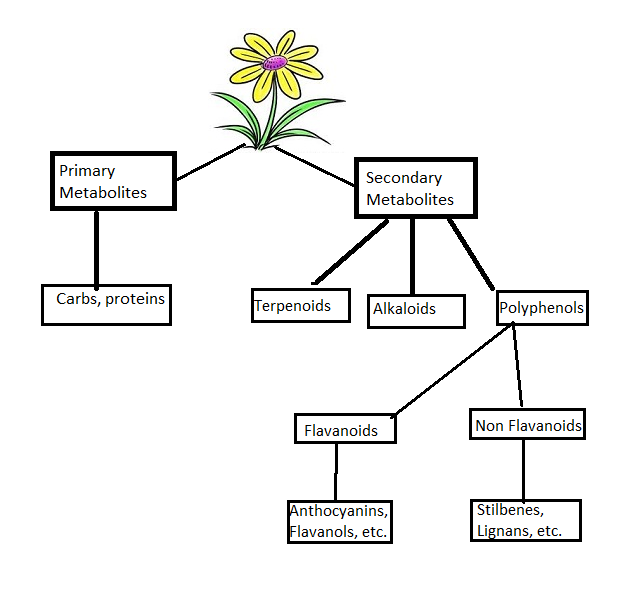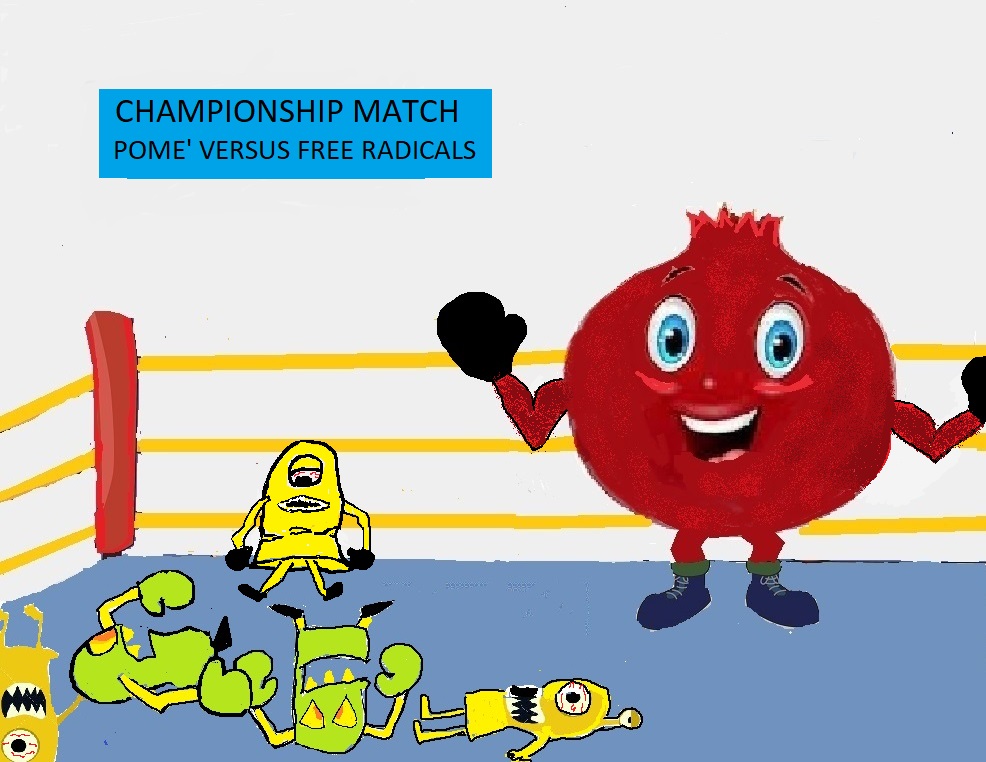- Home
- Polys & Superfood
- Polyphenols in Olive Oil
The Polyphenols in Olive Oil
The polyphenols in olive oil equal about 2% of the oil weight and include at least 30 plyphenols. That’s huge because polyphenols provide similar benefits to the plants that possess them and the people who eat the plants – PROTECTION.
For plants, that includes protection from predators, pathogens and disease. For you and me, polyphenols provide protection from pathogens and disease.
Polyphenol Protection
Because these plant compounds are powerful antioxidants, polyphenols protect us from free radicals that are created by the cells in your body during metabolism. While your body has a natural antioxidant system where antioxidants are made in your cells to neutralize these free radicals, this system can become overwhelmed by excess free radicals.
These excess free radicals are caused by a bunch of things like diet, lifestyle and your daily exposure to toxic chemicals. When your body can’t eliminate free radicals, it causes oxidative stress.
And oxidative stress sets up a cycle of chronic inflammation in your body that causes chronic diseases like atherosclerosis, Alzheimer’s disease, Type 2 Diabetes and cancer, plus obesity and premature aging.
Powerful antioxidants, like the polyphenols in olive oil, help you get rid of free radicals. They also provide the building blocks for your body to produce its own antioxidants. This reduces oxidative stress, which protects your health.
And with olive oil, you’ve hit the polyphenol mother lode. The huge number and variety of polyphenols in olive oil qualify it for superfood status.
Types of Polyphenols in Olive Oil
The numerous polyphenols in olive oil are classified into six chemical families: secoiridoids, phenolic acids, flavonoids, lignans, phenolic alcohols and hydroxy-isocromans
Secoiridoids are the largest group of polyphenols and includes oleuropein, the main polyphenol found in olive oil. The main flavonoids in olive oil are luteolin and apigenin.
The secoiridoids, oleuropein and oleocanthal and the phenolic alcohol hydroxytyrosol, are the most studied polyphenols. Their proven benefits include being strong antioxidant compounds that counteract free radicals, which helps prevent many diseases. They also have anti-inflammatory, anti-cancer and anti-ageing benefits.
Specific Polyphenols in Olive Oil
- Secoiridoids: Demethyloleuropein, oleuropein, oleacein, oleocanthal ligstroside, and their aglycone derivatives
- Phenolic Acids: P-coumaric, gallic, vanillic, and caffeic acid
- Flavonoids: Luteolin, eriodictyol apigenin, and their derivatives
- Lignans: Pinoresinol and 1-acetoxypinoresinol
- Isochromans: 1-phenyl-6,7-dihydroxy-isochroman, and 1-(30-methoxy-40- hydroxy)phenyl6,7-dihydroxy-isochroman
- Phenolic Alcohols: Tyrosol, hydroxytyrosol, and homovanillyl alcohol
Highest Polyphenol Olive Oil
When it comes to polyphenol content, not all olive oils are created equal. And the main reason why is the way that olive oil is made.
To make oil, the olives are harvested, then crushed and the oil is separated from the pomace through pressing techniques. This is a mechanical process.
For Extra Virgin Olive Oil (EVOO) the processing is complete and the oil is bottled for sale. However, other types of olive oil go through additional refining.
In the refining step, heat, chemicals and other processes are used to change the taste, color and other characteristics of the oil. This chemical processing greatly reduces the amount and types of polyphenols.
Because EVOO doesn’t go through this refining process, it is the olive oil with the highest phenolic content. The average total polyphenol content of EVOO is around 55 milligrams per 100 grams of oil.
So, to get the most bang for your buck EVOO is the best choice. In fact, more than 36 polyphenols have been isolated from EVOO. As I mentioned before, secoiridoids are the major group of phenols in olive oil and oleocanthal, and oleuropein are present in the greatest amounts.
Oleocanthal makes up about 10% of the total phenolic content in EVOO. It is responsible for the pungency of fresh olive oil. Oleuropein is responsible for the characteristic bitter taste of unprocessed olives.
As one of the key foods of the Mediterranean diet, EVOO is known for its high content of nutritional and antioxidant compounds compared to other vegetable oils.
EVOO includes not just health-promoting polyphenols, but is also is primarily composed of unsaturated fatty acids, monounsaturated fatty acids (MUFA, oleic acid, 55%–83%) and polyunsaturated fatty acids (PUFA, linoleic acid, 2.5%–21%), fat-soluble vitamins, oleic acid, and tocopherol.
Studies have found the polyphenols in olive oil have antioxidant, anti-aging, anti-inflammatory, anti-atherogenic, anti-cancer, antimicrobial, antiviral, skin- and cardio-protective benefits.
Superfood Benefits of Polyphenols in Extra Virgin Olive
Oil
A large amount of scientific evidence supports the beneficial health effects of polyphenols in EVOO.
EVOO’s polyphenols have:
- Antioxidant effects
- Anti-cancer and chemo-preventive effects
- Cardiovascular protective effects
- Antibacterial, antiviral and antifungal activity
- Respiratory effects
- Endocrine effects
- Gut and immune system effects
- Neuro-protective activity
- Anti-aging effects
In fact, research has found that the health-promoting properties of the polyphenols in olive oil go well beyond their antioxidant power, creating multi-target effects. For example, olive oil polyphenols have anticancer effects in breast, colon, and prostate cancer and melanoma.
Several studies also found that oleuropein can protect the liver, one of the target organs of oxidative stress. That’s important because the liver is a super vital part of your body’s detox system.
Recent research on the value of EVOO to protect your health include a 2022 study that analyzed 30 years of health data on 92,000 people who consumed just a half tablespoon per day compared with those who never or rarely consumed olive oil.
Higher olive oil intake was associated with a 19% lower risk of dying from cardiovascular disease, 17% lower risk of death from cancer, 29% lower risk of death from neurodegenerative disease and 18% lower risk of death from respiratory disease.
Another example was published in 2023 by the European Journal of Clinical Nutrition and reported findings on a 10+ year study. The researchers found daily moderate consumption of EVOO (1 and 1/2 tablespoons) was associated with a one-third lower risk of dying as well as half the risk of dying from cardiovascular disease.
Preserving
The Polyphenols in Olive Oil
There are 3 main things to consider when you buy and use extra virgin olive oil to perserve its polyphenol content. The quality and the container it comes in is the first thing.
The second thing is how you will store it. The temperature its stored in will preserve the polyphenols for longer.
The third thing is the best ways to add EVOO to your diet.
1. Buying EVOO
Buy the best EVOO you can afford. If you have an unlimited budget, then cold-pressed, organic, single harvest olive origin with a high polyphenol count would be the best option. But it’s not realistic for those of us with a food budget.
So, choose EVOO that is cold-pressed. And be picky about the type of container it comes in. NEVER buy EVOO in a plastic container.
If you’ve spent any time on this site, then you know how I feel about plastic food containers. And my opinion is based on science. PET-based containers have been found to be permeable to both gas and water vapor. Plus, toxic chemicals migrate from the bottle to the oil.
I always bought my olive oil in dark green glass bottles to protect it from light exposure. And, while dark glass containers can protect the polyphenols in EVOO for up to 9 months, I learned from writing this article that new research shows there are better options.
A 2021 study compared the quality of EVOO stored in green glass and multilayer (plastic-coated paperboard aluminium foil) (MLP) packaging after 300 days of light exposure. MLP (aka Tetra Bric or Tetra Prisma–type containers) provided the best protection against oxidation and preserved more polyphenols.
Another study that compared glass, PET plastic, tin and Tetra Bric containers found that the best containers were tin and Tetra-brik. Below are some great options for quality EVOO in tin and Tetra Bric.
2. Storing Your EVOO
Besides the type of container it comes in, the temperature you store it at is important. Temperature is an enemy of the polyphenols in olive oil.
Stores and most people store their EVOO at room temperature (65-77 degrees F). But research shows that cold temperatures may be better for
long term storage. For example, the polyphenols oleocanthal, squalene, and total phenols are affected by storage temperatures more than other compounds and are best protected by low temperatures.
Based on the results of several studies, the best storage temperature to preserve the polyphenols in olive oil is between 39-59 degrees F. What this boils down to is - put your EVOO in the fridge if you're not going to use it within 3 months.
I use a lot of EVOO. So, I buy it in smaller bottles and keep the extra in the fridge. This is really important in the hot summer months.
3. Adding The Polyphenols in EVOO to Your Diet
EVOO is the ONLY type of oil I use. I use it right out of
the bottle for dressings and I have this great olive oil sprayer that
I use on popcorn, pasta, flatbreads and more instead of butter. And I use it
for cooking.
But, I need to address 2 things here so you all don’t think I’m clueless about the carcinogens created when cooking with oil and the smoke point of olive oil.
a. Olive Oil Oxidation
Cooking with oil does cause physical and chemical reactions, that can create substances that are cytotoxic, mutagenic and carcinogenic. But, the polyphenols and other components of oil determine how many toxic compounds are created.
Studies on EVOO found it to be the most stable oil when heated given its unique chemical composition, which is rich in monounsaturated fatty acids and antioxidants.
In other words, EVOO has a high level of oxidative stability when compared to other types of cooking oil and is less likely to undergo oxidation. The polyphenols and Vitamin E in EVOO, enhance the oil’s stability and resistance to oxidation
I also want to point out that all oils will oxidize and hydrogenate a bit when heated several times using high temperatures. Do you reuse your oil? Most of the panic about oil oxidation and carcinogens had to do with commercial frying processes, where oil is reheated and used multiple times.
b. Smoke Point
There is also a myth flying around the internet that EVOO is not suitable for cooking because it has a low smoke point, There is no scientific evidence that supports this.
The smoke point is defined as the temperature where a visible and continuous bluish smoke appears. At this point, volatile compounds are evaporating from the oil. Using smoke point to determine the ability of an oil to withstand heat is technically incorrect. and is not supported by scientific evidence.
In fact, initial smoke point has proven to have very little to do with an oils’ stability under heat. And recent research suggests that EVOO is the most stable oil when heated when compared to other edible oils with higher smoke points.
Best Cooking Methods to Preserve Polyphenols
I wish I had a scientific answer to this question. But there is so
much specific and conflicting info on this in the scientific literature that I
just can’t make any general statements.
For example, some research has found frying and steaming may preserve or enhance EVOO’s antioxidant capacity, while sautéing, pressure cooking, boiling, and microwaving may lead to a big loss of polyphenols.
Other studies suggest microwaving for 5 min at 500 W did not cause big losses in total polyphenol content, while baking at 350 degrees F for 45 minutes caused an 11% loss. In any case, both methods were better to maintain polyphenols than boiling for 40–80 minutes or frying for 1–5 h
Ya get my point. My suggestion is use EVOO like you would normally use any plant-based oil. Because, adding a tablespoon or two to your daily diet adds a polyphenol punch of PROTECTION to maintain good health.
Learn more about how to protect your health with polys and superfoods by clicking on the following articles.









